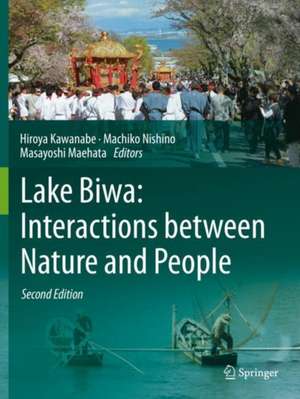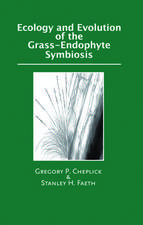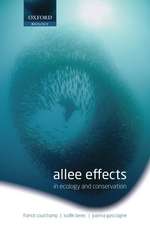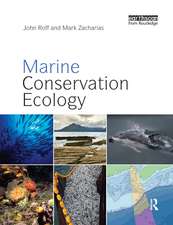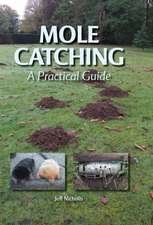Lake Biwa: Interactions between Nature and People: Second Edition
Editat de Hiroya Kawanabe, Machiko Nishino, Masayoshi Maehataen Limba Engleză Paperback – 26 aug 2021
Furthermore, this volume covers the characteristics of the biota of this ancient lake, but at the same time, it will also approach it as a ‘culture ancient lake’. Other topics also include water pollution, lakeshore development, the effects of global warming in the past and present, the influence of people, and countermeasures by local and national governments. Moreover, the volume also provides a comprehensive view on the future of Lake Biwa and that of its residents. Miraculously enough, this ancient lake has kept its water quality clear even until today despite the fact of more than 1.4 million people living on its shores. Finally, the book also gives indispensable information to those engaged in improving and conserving water regimes of lakes and other water bodies all over the world and to those interested in the culture and history of Japan.
Lake Biwa is not only one of the rarest ancient lakes of the world, but the people’s involvement with the lake also goes back a long way. This is shown in the diverse culture developed in this area and in the various archaeological finds that date back as early as the Jomon Period, nearly 10.000 years ago. Today Lake Biwa fulfills an important role as a water resource by providing domestic, commercial, industrial, and agricultural water for over 14 million residents living around the Lake Biwa-Yodo River drainage basin. This updated volume focuses on the geological and biological features of the lake as well as on the long-term interactions between the people and the lake.
| Toate formatele și edițiile | Preț | Express |
|---|---|---|
| Paperback (2) | 1095.92 lei 38-44 zile | |
| SPRINGER NETHERLANDS – 23 aug 2016 | 1095.92 lei 38-44 zile | |
| Springer International Publishing – 26 aug 2021 | 1638.35 lei 38-44 zile | |
| Hardback (2) | 1114.83 lei 38-44 zile | |
| SPRINGER NETHERLANDS – 25 mai 2012 | 1114.83 lei 38-44 zile | |
| Springer International Publishing – 26 aug 2020 | 1678.99 lei 38-44 zile |
Preț: 1638.35 lei
Preț vechi: 2155.71 lei
-24% Nou
Puncte Express: 2458
Preț estimativ în valută:
313.49€ • 328.19$ • 259.40£
313.49€ • 328.19$ • 259.40£
Carte tipărită la comandă
Livrare economică 01-07 aprilie
Preluare comenzi: 021 569.72.76
Specificații
ISBN-13: 9783030169718
ISBN-10: 3030169715
Pagini: 932
Ilustrații: XXXIV, 932 p. 432 illus., 285 illus. in color.
Dimensiuni: 210 x 279 mm
Ediția:1st ed. 2020
Editura: Springer International Publishing
Colecția Springer
Locul publicării:Cham, Switzerland
ISBN-10: 3030169715
Pagini: 932
Ilustrații: XXXIV, 932 p. 432 illus., 285 illus. in color.
Dimensiuni: 210 x 279 mm
Ediția:1st ed. 2020
Editura: Springer International Publishing
Colecția Springer
Locul publicării:Cham, Switzerland
Cuprins
1. Geological history and transition of the biota of Lake Biwa.- 2. Biodiversity of Lake Biwa.- 3. Ecological changes in Lake Biwa.- 4. History of the relationship between people and Lake Biwa.- 5.The use of Lake Biwa and people’s lifestyle.- 6. Evolving issues toward improvement of Lake Biwa – Yodo river basin governance.- 7. Environmental conservation of Lake Biwa.
Notă biografică
Prof. Hiroya Kawanabe: Former Director General of the Lake Biwa Museum, Japan. Graduated with a doctorate degree from Kyoto University (zoology) and then worked as a lecturer, associate professor and professor, with the Director of Ecological Research Center at the same university. Director General at the Lake Biwa Museum from April 1996 until March 2010. Fields of expertise: Ecology of community relationships. Biological and cultural diversity Key words of research: Freshwater fish, relationships among organisms as a whole, historical characteristics of communities.
Textul de pe ultima copertă
Although, the first edition had a similar focus, more than five years have passed since its publication and the biological and social circumstances of the lake have drastically changed due to, for example, the further expansion of alien species, the decrease of indigenous species, the progress of integrated watershed management by the Union of the Kansai Government which was established in 2010, the legislation of the Conservation and Restoration Act of Lake Biwa in 2015 and more. The new edition will therefore feature updated and new information on the above and more topics as well as updated and revised data based on the latest research. Inventories of respective taxa, especially those of small animals, are also revised based on the latest studies.
Furthermore, this volume covers the characteristics of the biota of this ancient lake, but at the same time, it will also approach it as a ‘culture ancient lake’. Other topics also include water pollution, lakeshoredevelopment, the effects of global warming in the past and present, the influence of people, and countermeasures by local and national governments. Moreover, the volume also provides a comprehensive view on the future of Lake Biwa and that of its residents. Miraculously enough, this ancient lake has kept its water quality clear even until today despite the fact of more than 1.4 million people living on its shores. Finally, the book also gives indispensable information to those engaged in improving and conserving water regimes of lakes and other water bodies all over the world and to those interested in the culture and history of Japan.
Lake Biwa is not only one of the rarest ancient lakes of the world, but the people’s involvement with the lake also goes back a long way. This is shown in the diverse culture developed in this area and in the various archaeological finds that date back as early as the Jomon Period, nearly 10.000 years ago. Today Lake Biwa fulfills an important role as a water resource by providing domestic, commercial, industrial, and agricultural water for over 14 million residents living around the Lake Biwa-Yodo River drainage basin. This updated volume focuses on the geological and biological features of the lake as well as on the long-term interactions between the people and the lake.
Furthermore, this volume covers the characteristics of the biota of this ancient lake, but at the same time, it will also approach it as a ‘culture ancient lake’. Other topics also include water pollution, lakeshoredevelopment, the effects of global warming in the past and present, the influence of people, and countermeasures by local and national governments. Moreover, the volume also provides a comprehensive view on the future of Lake Biwa and that of its residents. Miraculously enough, this ancient lake has kept its water quality clear even until today despite the fact of more than 1.4 million people living on its shores. Finally, the book also gives indispensable information to those engaged in improving and conserving water regimes of lakes and other water bodies all over the world and to those interested in the culture and history of Japan.
Lake Biwa is not only one of the rarest ancient lakes of the world, but the people’s involvement with the lake also goes back a long way. This is shown in the diverse culture developed in this area and in the various archaeological finds that date back as early as the Jomon Period, nearly 10.000 years ago. Today Lake Biwa fulfills an important role as a water resource by providing domestic, commercial, industrial, and agricultural water for over 14 million residents living around the Lake Biwa-Yodo River drainage basin. This updated volume focuses on the geological and biological features of the lake as well as on the long-term interactions between the people and the lake.
Caracteristici
Features updated, revised and new information on Lake Biwa Covers the characteristics of the biota Focuses on geological and biological features Looks at long-term interactions between people and the lake Provides future perspectives of Lake Biwa and its people’s lifestyles
